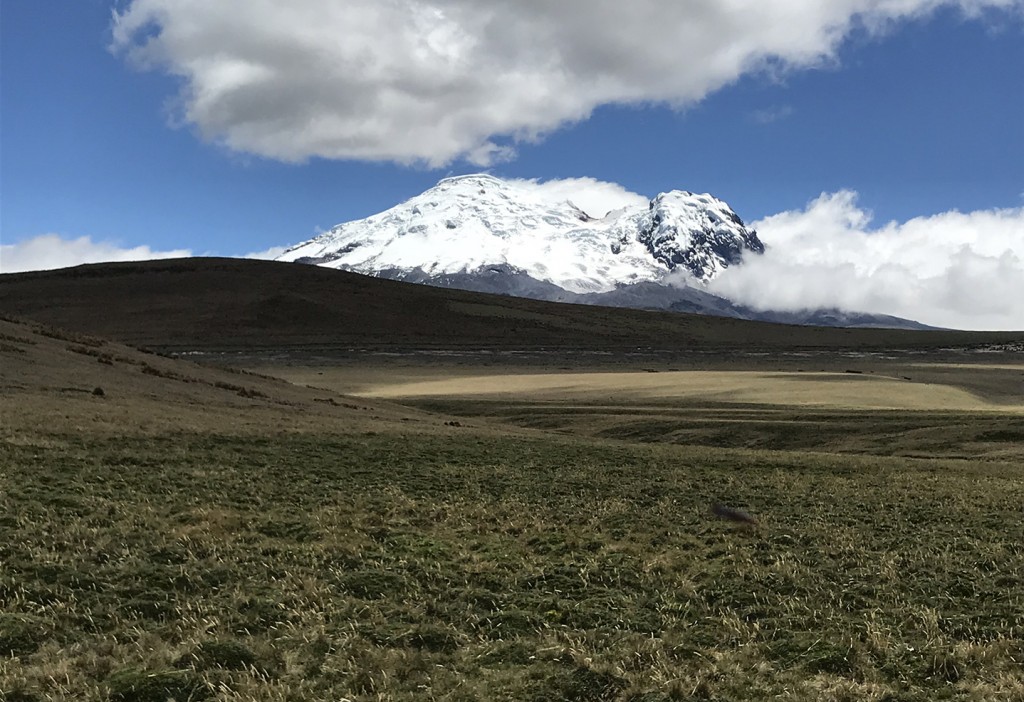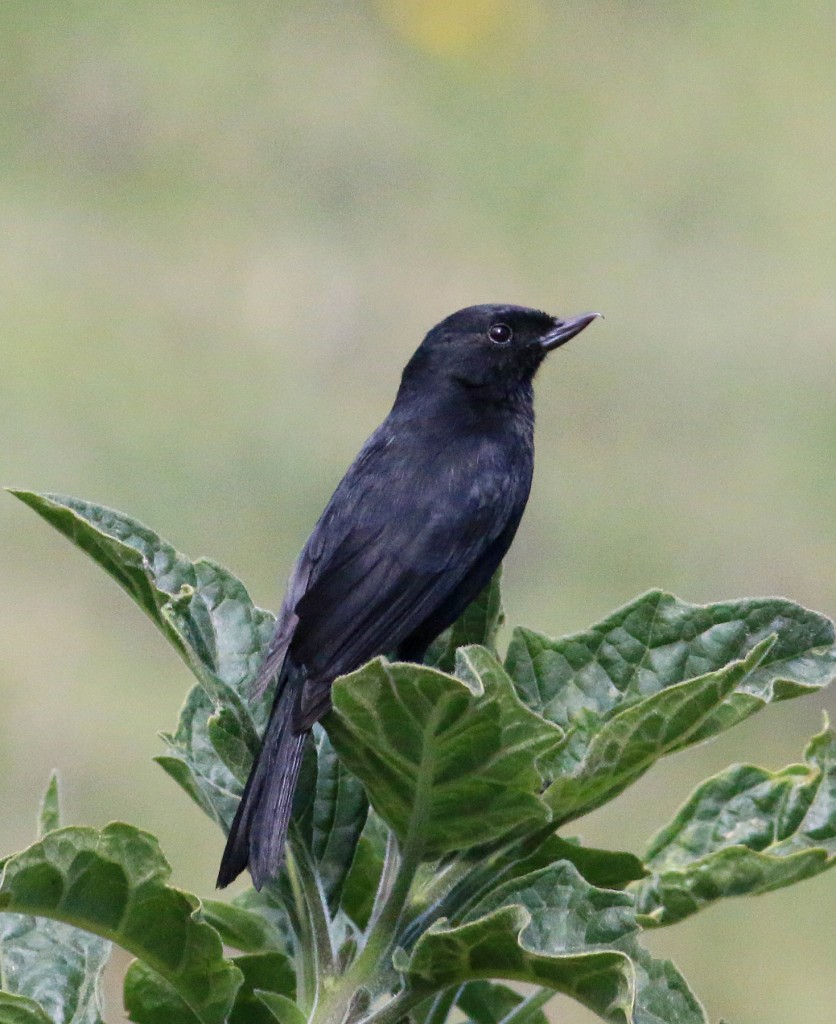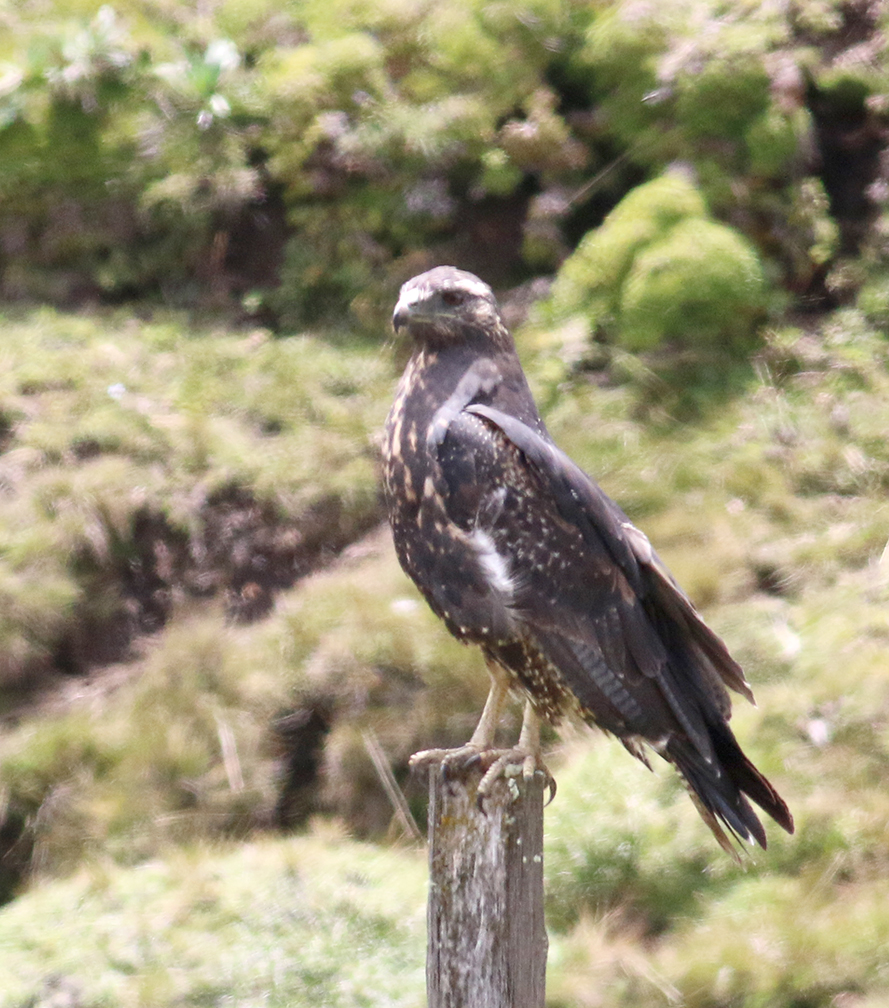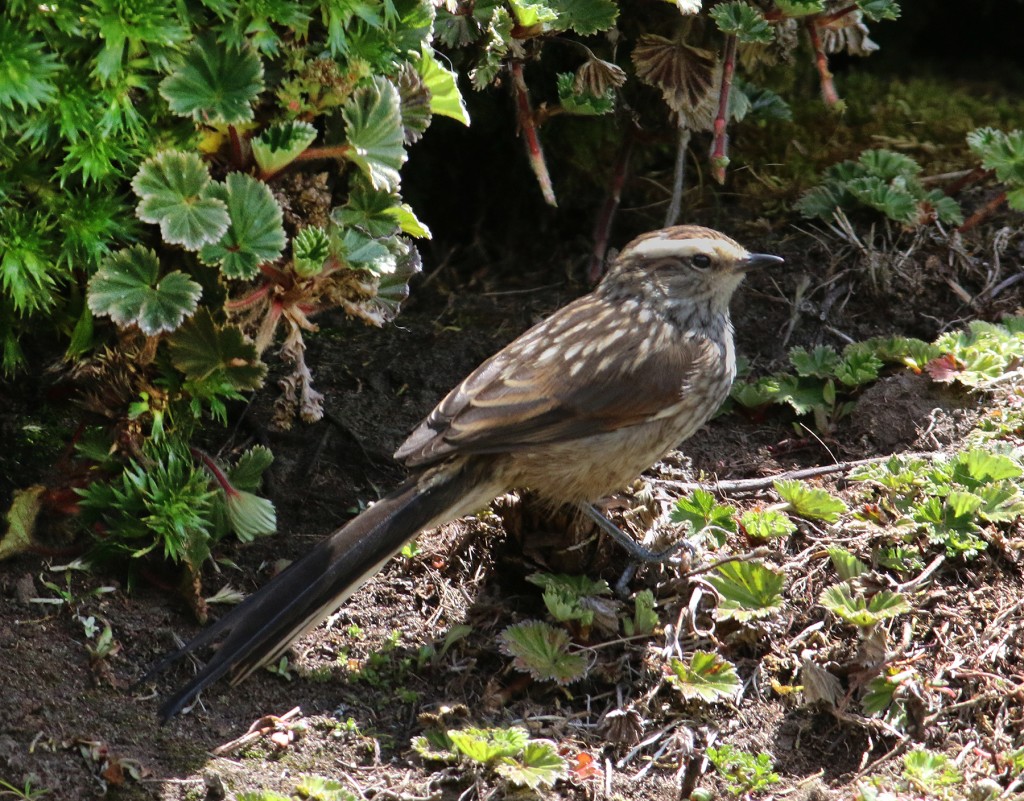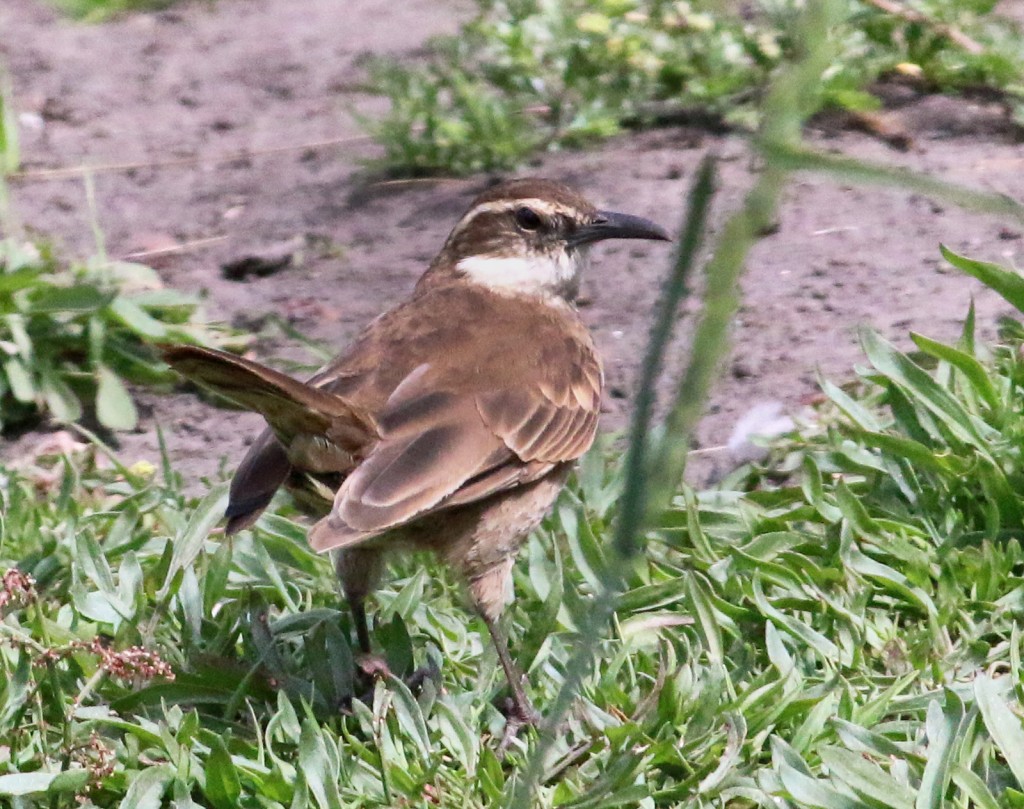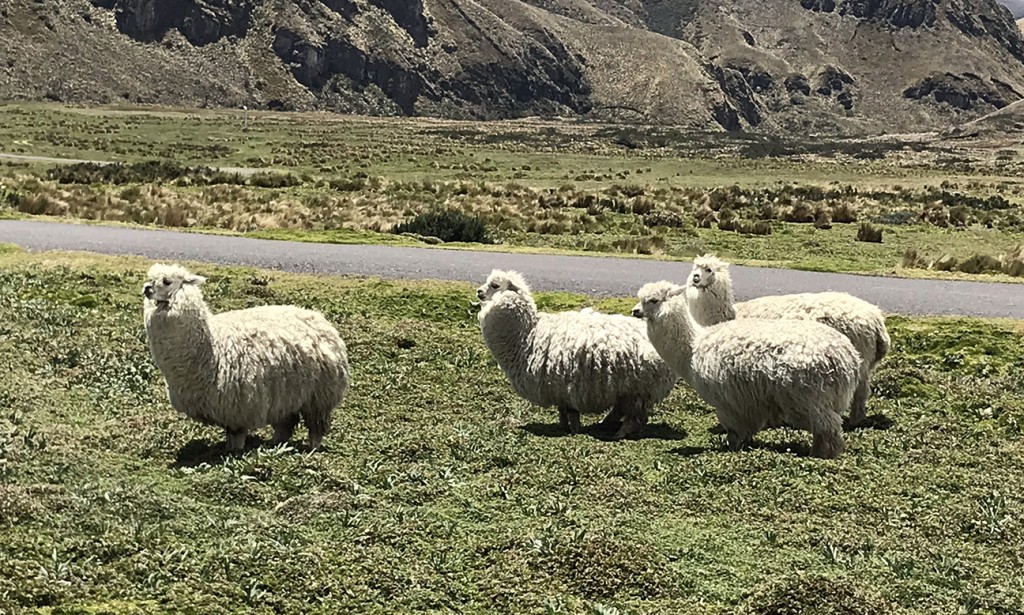On our final day we drove ~ 1 1/2 hrs from Papallataca up to Antisana Ecological Reserve. Antisana is huge, at 125,000 hectares (~300,000 acres), and it is a great day-long birding destination that starts only an hour or so southeast of Quito, with a nice list of high-quality high-altitude target species. Unfortunately, we only had half a day to explore this location, but we made the best of the opportunity.
The altitude within the park ranges up to 18,714 ft at the peak of Antisana Volcano, but most birders travel the main road only up to Mica Lake (Laguna Micacocha), which is at 13,000 ft. The road is entirely paved except for a mile or so near an active quarry, providing easy access, and there is no entry fee. Our first stop was the Tambo Condor Restaurant beyond the outskirts of the small town of Pintag.
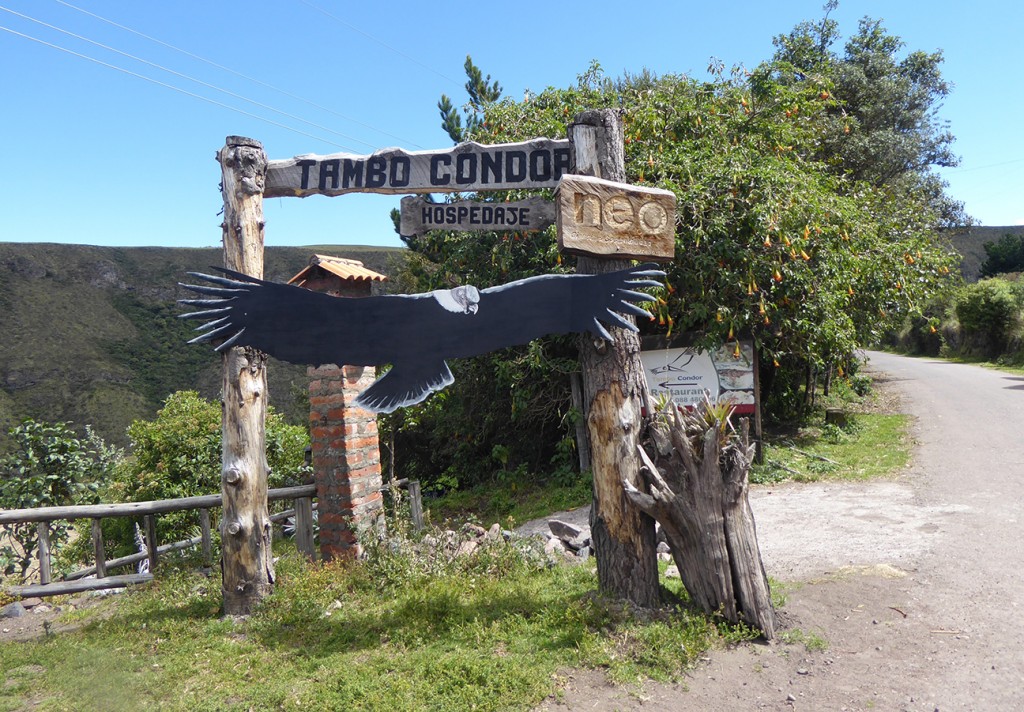
The entrance to Tambo Condor. The cliffs in the left background are where Andean Condors roost, but unfortunately this wooden sign was as close as we got to a Condor.
Tambo Condor is a convenient and worthwhile stop, partly because it is one of the few places (if not the only place) to get food along this road, but also because some quality birds can be seen here. To start, across the valley from the restaurant is a cliff face where Andean Condors roost. We were able to see many splotches of whitewash on the cliffs here, but alas, no condors. Another target that we were told could be found here is Giant Hummingbird, the largest hummingbird in the world at 9 inches long with an 8.5 inch wingspan, which to put in perspective, is approximately the same dimensions as our Northern Cardinal.(!!) Here we were more successful, spotting this outsized but otherwise plain bird several times. While waiting for breakfast to be served, we also spotted Black Flowerpiercer, a gorgeous Golden Grosbeak, Sparkling Violetears, and our only Stout-billed Cinclodes of the trip. They have a small cabin for rent here, which could provide a nice base for a more relaxed exploration of the paramo. For somebody like me who has more than a few years under his belt and is used to the amount of oxygen at sea level, it would be interesting to see if sleeping at this altitude (11,550 ft) would be difficult. I certainly felt winded just walking up the short and slight incline from the restaurant up to the road.
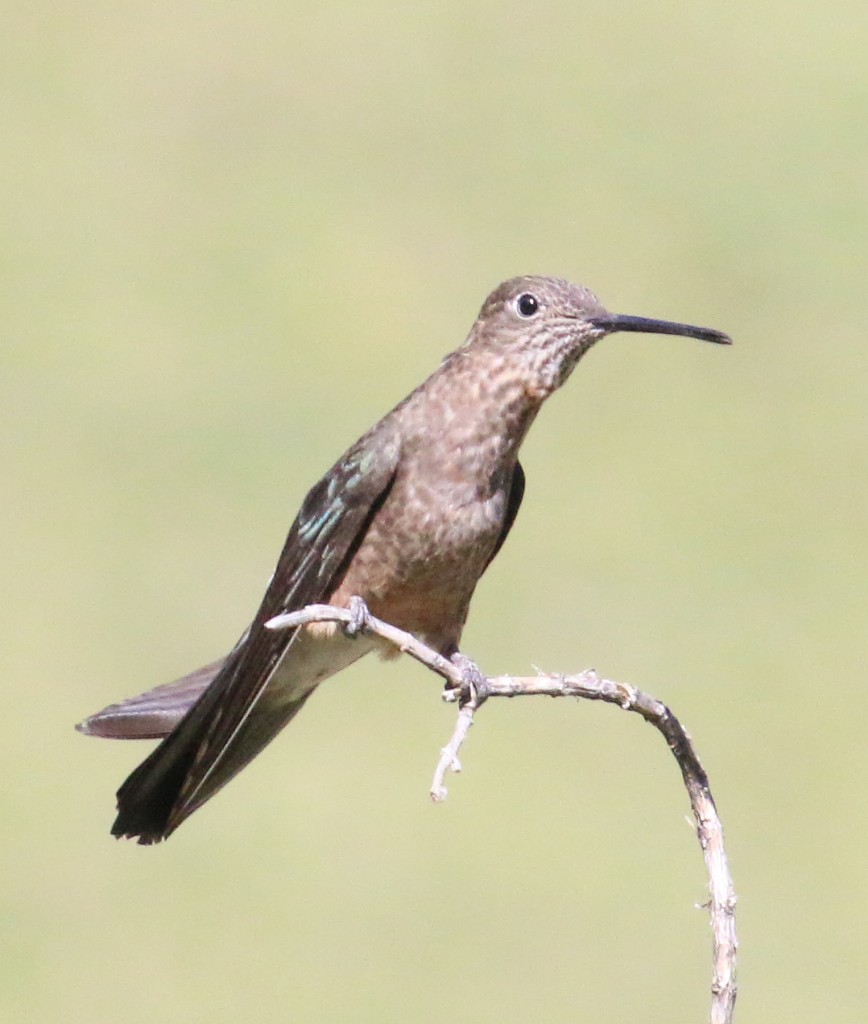
An alert Giant Hummingbird. What it lacks in color it makes up for in size. Unfortunately it is hard to gauge the size of this bird from this photo, but it is a LARGE hummingbird, approximately the size of a cardinal.
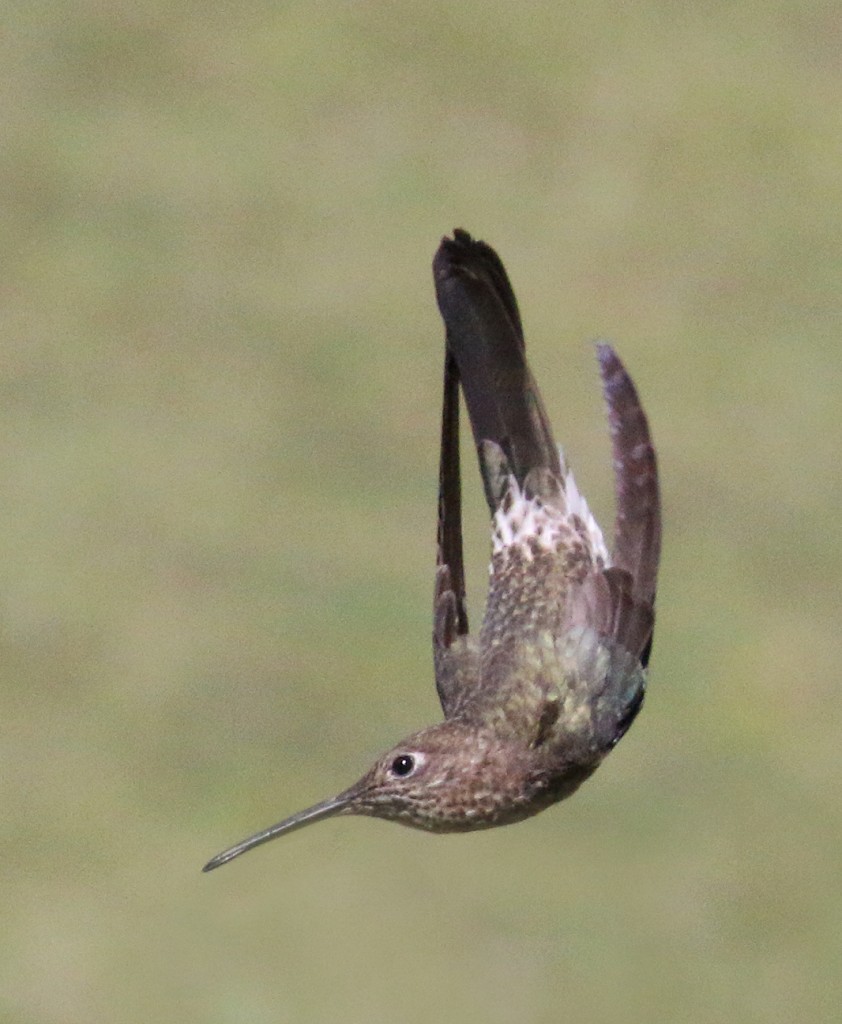
I was able to capture a Giant Hummingbird in the midst of an aerial maneuver shortly after taking off from its perch. Note the distinctive white rump patch.
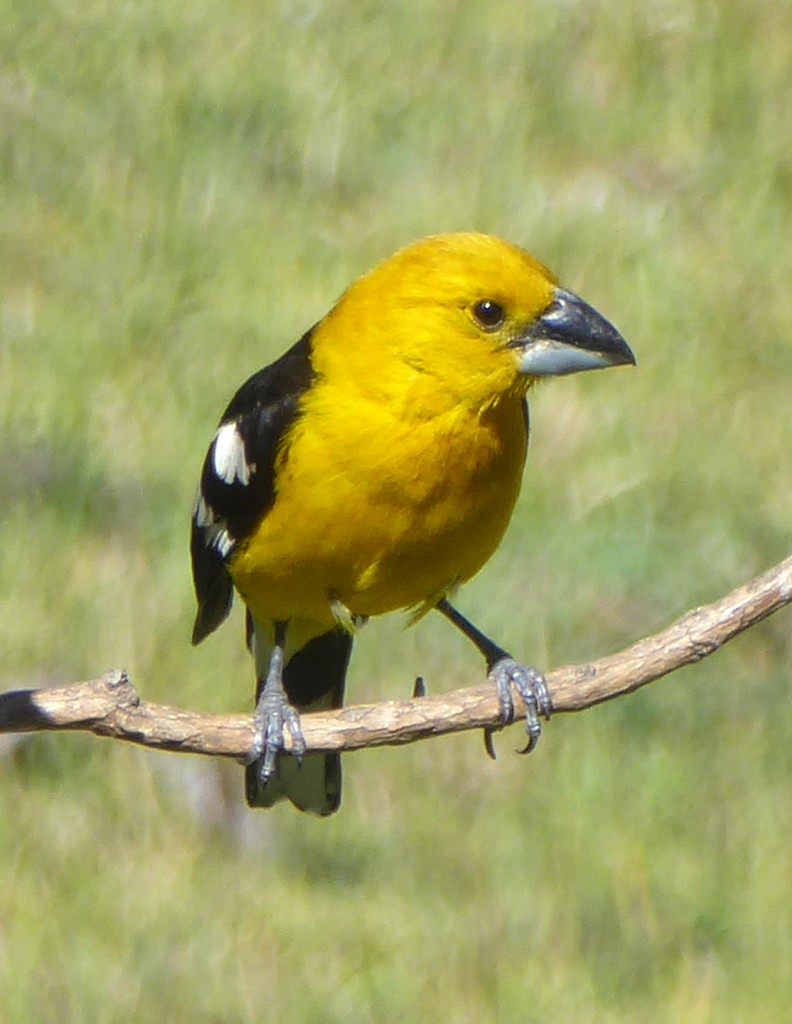
A Golden Grosbeak visited while we were waiting to see the Giant Hummingbird at Tambo Condor. Now that is what I call a gross beak!
After leaving the restaurant we progressed further uphill, constantly scanning the skies and the horizon for condors and other raptors. We did have one quick but otherwise great sighting of an Aplomado Falcon swooping across a field near the road. This was a large bird with the distinctive pointed falcon wing shape that appeared, swooped, and was gone in a flash. Very impressive. We spotted two other raptors along the road; Carunculated Caracaras are abundant up here, and on the way back down we found a perched Variable Hawk.
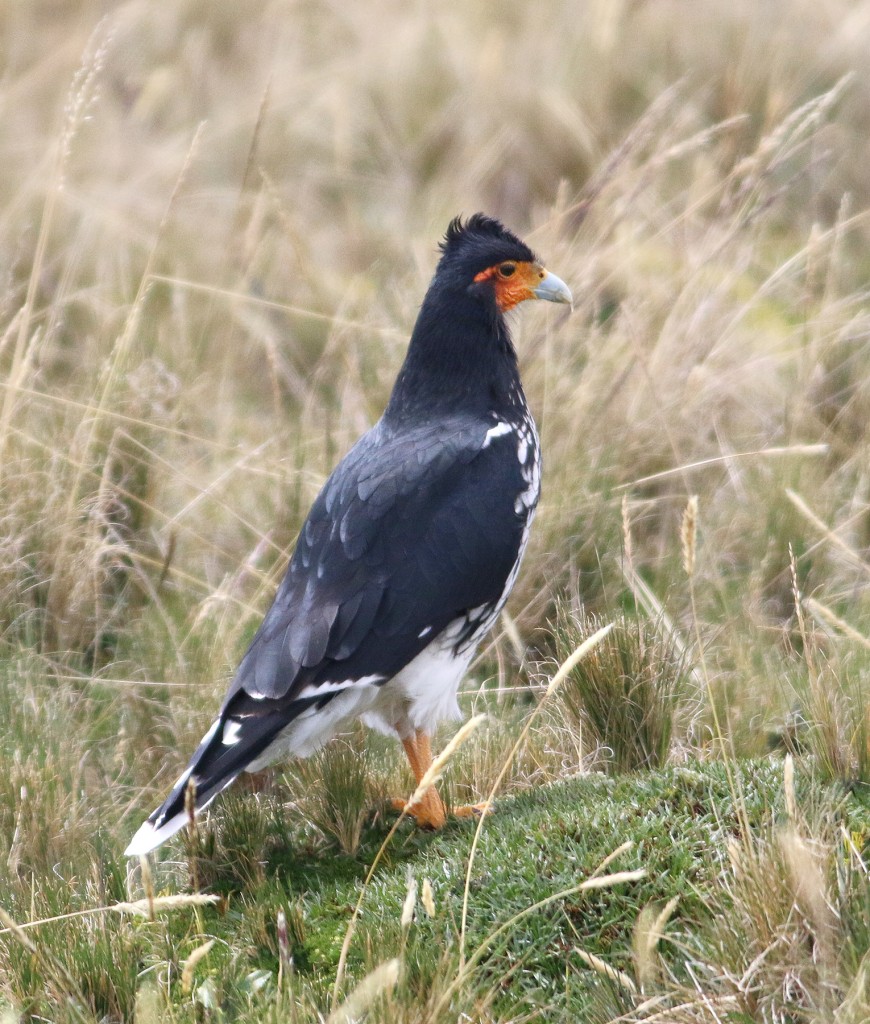
An alert Carunculated Caracara in the paramo. They were very common, with somewhere between 50 and 100 of them spotted during our day in Antisana Reserve.
Our target destination at the end of the road was Mica Lake (or Micacocha). Shortly before arriving there we spotted a pair of Black-faced Ibis conveniently feeding near the road. This is a large ibis, with a thick neck and legs, presumably to help withstand the cold at this altitude.
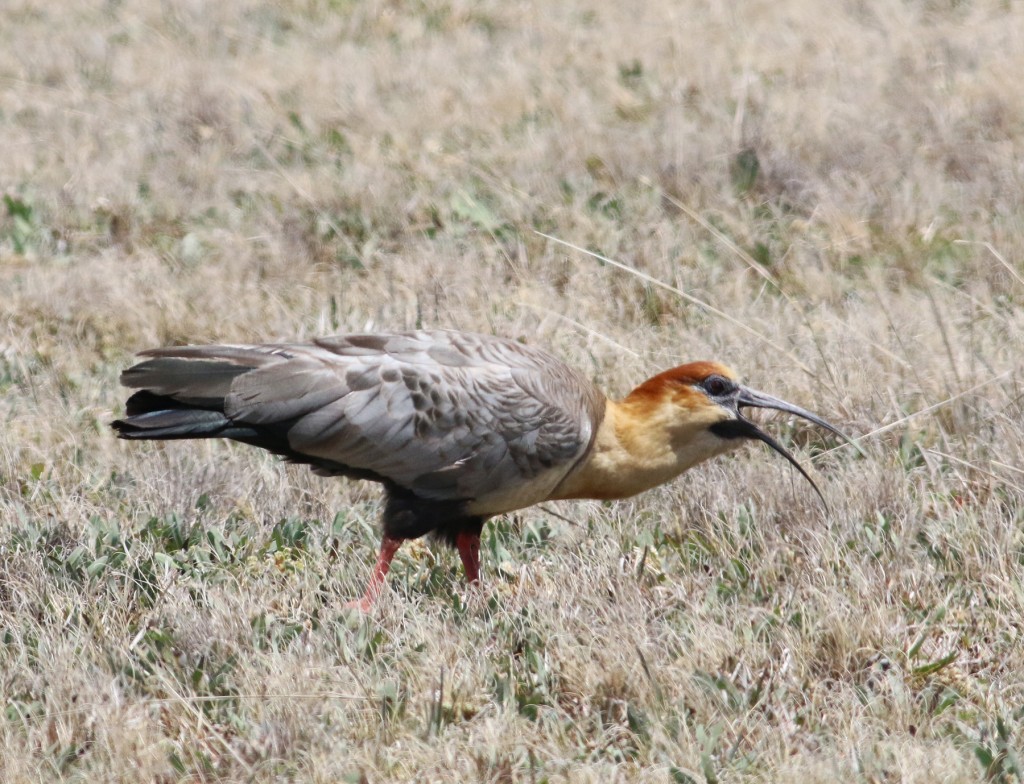
One of two Black-faced Ibis that we saw in the paramo. This is one of the rarer target birds up here.
When we arrived at the visitor center parking area, we were already running short of time. We barely had enough time to scan around the area, and then take a rushed walk to the overlook of the lake before needing to start our drive back downhill in time to get to the airport for our homebound flights. Although our time at the visitor center was very limited, we found several excellent birds within a ten-minute span, including nesting Ecuadorian Hillstar, multiple Tawny Antpittas, Plumbeous Sierra-finch, Chestnut-winged Cinclodes, and Andean Tit-spinetail. At the lake we had poor scope views of Andean Coots and Ruddy Ducks before the alarm went off signaling that our birding time was up.
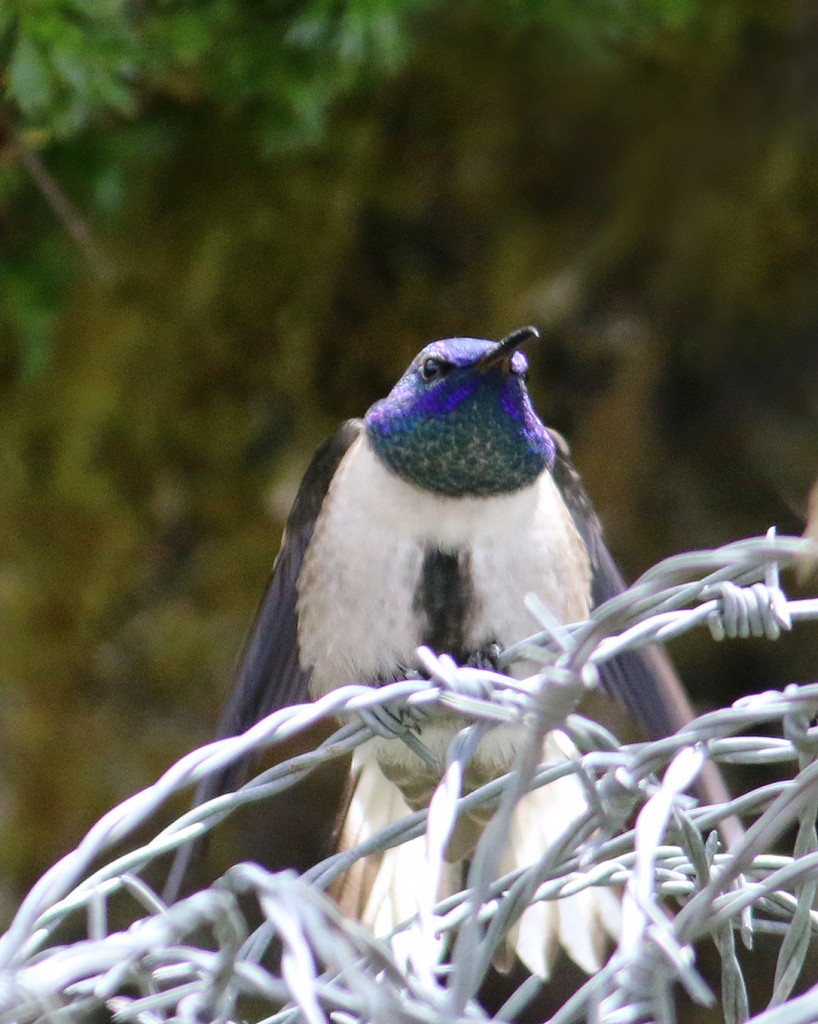
A male Ecuadorian Hillstar, with its blue-and-purple head, white breast and distinctive central dark breast band. It’s a super bird, but posing in an unfortunate un-natural location.
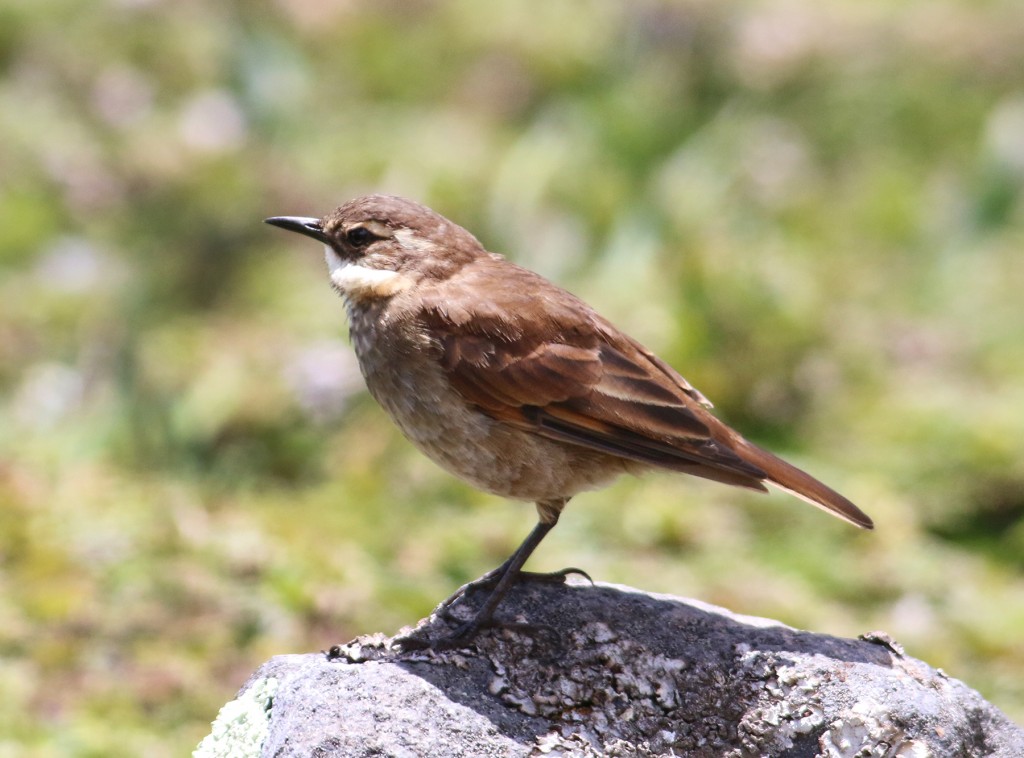
Here is one of several Chestnut-winged Cinclodes that we found near Mica Lake. Compare the bill size with its less common Stout-winged relative below.
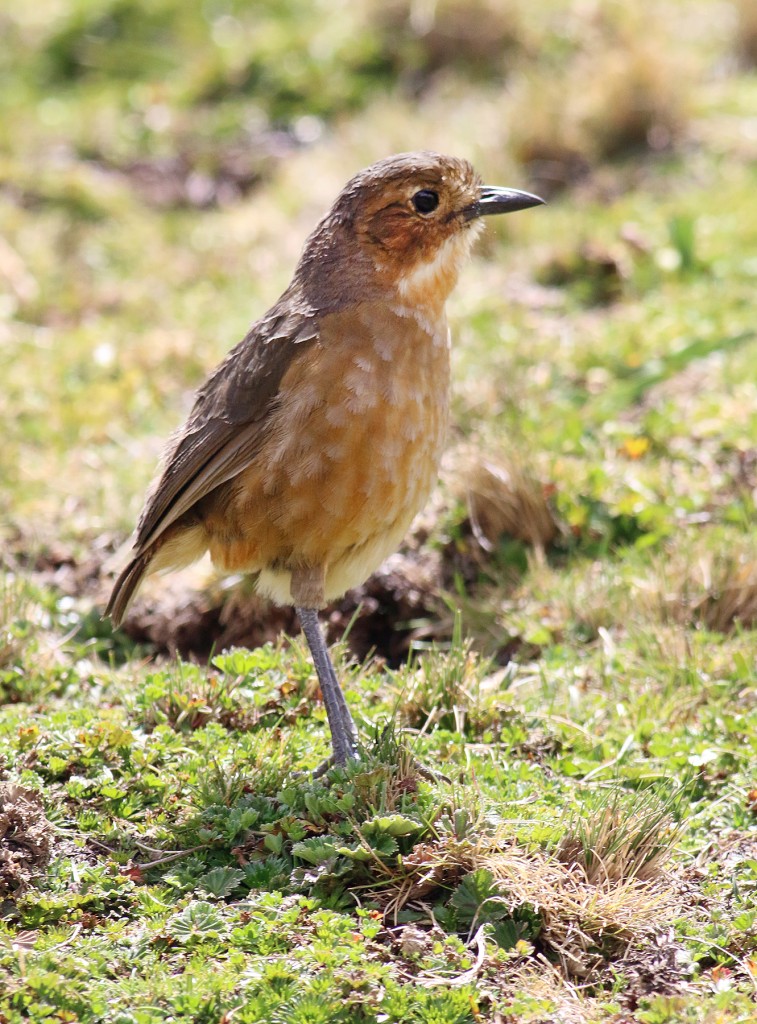
I missed getting a photo of a perched singing Tawny Antpitta at Papallacta Pass, but captured this one near the visitor’s center at Mica Lake.
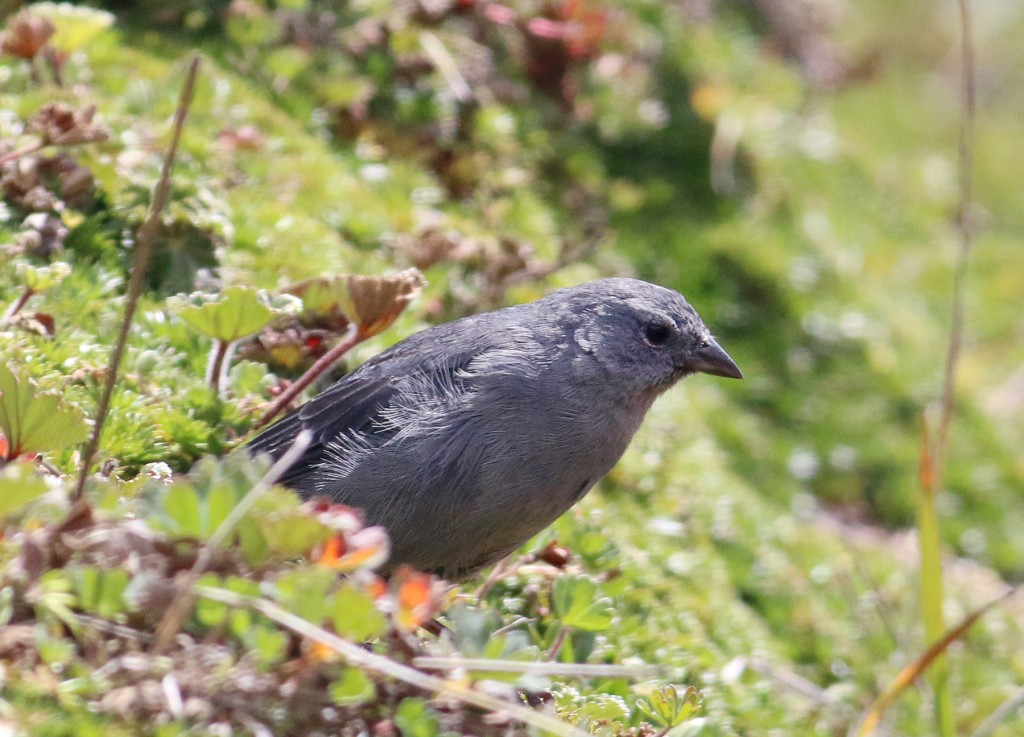
Here is a uniformly slate-gray male Plumbeous Sierra-finch. Yes, it is quite plumbeous indeed. The females have no gray, but instead look very much like a typical streaked brown sparrow.
It was unfortunate that we were unable to spend more time up here; a full day is needed to drive at a more relaxed pace, with occasional stops to scan and soak in the spacious 360-degree horizon, and to walk from the visitor center to the lakeside. I’m sure that there were plenty of other good high-altitude birds to be found along the lake and in the polylepis patches in the lower altitudes of the reserve. We were forced to leave them for another day and another vacation as we bid a fond adios to Ecuador.
THE SUMMARY
If you have been keeping up with this Ecuador 2018 blog series, you probably get the sense that this was a terrific trip (and congratulations and thanks for making it through the whole 6-part series!). I am a big fan of self-guided trips, compared to large group tours with a guide pointing out all the birds with little or no input from the patrons. On this trip we interspersed two days with local guides to strike a nice balance. I realize that my style of birding is not for everyone and it is more difficult and results in fewer species seen, but for me the rewards outweigh those disadvantages. Self-guided trips also are not feasible everywhere, for example where safety might be an issue, or where language skills are lacking, or where getting around can be problematic. If you are feeling adventurous, however, and want to try a self-guided trip, the eastern Andes of Ecuador is a great place to start due to the simple logistics and having fine lodges scattered down this slope.
Would we change anything? Probably not anything substantial. The idea of spending 2-3 nights per location worked out well. I would have liked a full day (or maybe even a little more) in the paramo, but we were working within the constraints of trying to limit this to a two-week trip, so another day in the paramo would mean one fewer day elsewhere. I’m sure that we could have done better bird-wise in the lowlands near Jatun Sacha. We didn’t even hike on their main trail system or try to climb their 30-meter tower, and the morning spent going to their ‘parrot lick’ was a waste. One thing that I might change is the timing. I would love to know how different it is in Ecuador at another time of year. There was not much bird song on this trip even though a few species were nesting, and it sure would help to find and more confidently identify more birds if they were vocalizing. It might be better to go during the main breeding season, but I suspect that there would be more rain then too. And to be honest, I simply need to get away from at least part of the frigid northeastern US winter (which seems to get longer each year), which means going to a tropical location even if it is not the ideal time for birdsong.
I’ll end this series with a few numbers, even though numbers are a poor, poor, poor way to summarize a trip.
Number of species identified: 250
Lifer species for me (two previous trips to Ecuador): 59
Lifer species for Jeanine (who had not been birding in the tropics previously): 201 (!)
Cost: $2,189 per person (includes EVERYTHING, from flights to lodging, meals, guides, car rental, gas, trip insurance, even JFK airport parking and NJ Turnpike tolls)
Photos taken (my camera only): 1,842
